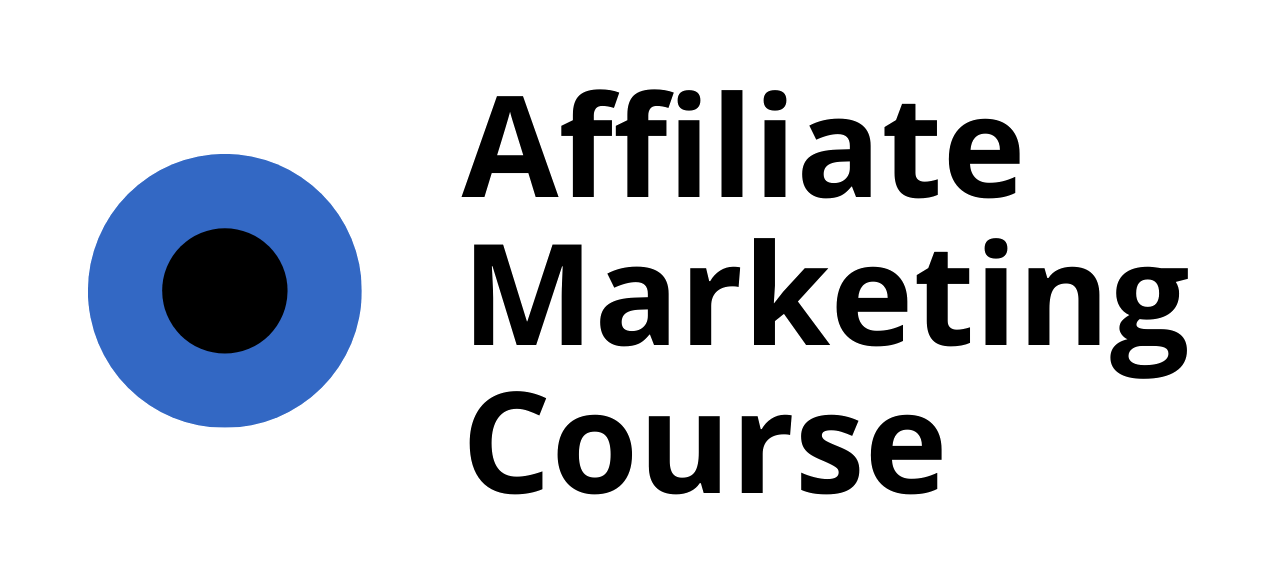Starting your journey into the world of affiliate marketing can feel overwhelming, especially if you’re new to the concept. However, breaking it down into manageable steps and understanding the fundamentals can make the process much smoother. Whether you’re looking to earn extra income online or build a sustainable business, this affiliate marketing 101 guide is designed to walk you through the essential principles, strategies, and tools that will help you get started. From mastering the basics to exploring proven tactics, this guide will provide you with actionable insights and practical advice to navigate the complexities of affiliate marketing. By addressing common questions and challenges, this comprehensive resource aims to empower you with the knowledge and confidence needed to succeed in the ever-evolving world of affiliate marketing.
Key Takeaways
– Affiliate Marketing Isn’t Inherently Difficult: It’s accessible, especially with free programs and abundant resources for beginners.
– Find Your Niche and Drive Traffic: Success begins with choosing a niche you’re passionate about and consistently driving targeted traffic.
– Leverage Tools and Resources: Use platforms, courses, and communities to ease the learning curve and stay informed.
– Understand Challenges but Stay Committed: Overcome obstacles like audience building, technical skills, and competition with persistence and strategy.
– Monetization and Compliance Are Critical: Balance ad placements and follow regulations to maximize earnings without alienating users.
– Stay Updated on Trends: Keep abreast of evolving digital marketing strategies to remain competitive.
– Build Trust and Deliver Value: Establish credibility through genuine content and reviews to attract customers.
– Navigate Network Requirements: Demonstrate your capabilities to secure affiliate program approvals and drive sales.
– Aim for Growth and Optimization: Continuously learn and adapt to achieve sustainable success in affiliate marketing.

How to Teach Yourself Affiliate Marketing
Affiliate marketing is a rewarding venture that allows individuals to earn commissions by promoting products or services. Here’s a structured guide to help you get started:
1. Choose Your Niche
Select a niche you’re passionate about. This ensures your content resonates authentically with your audience. Consider your interests, whether it’s tech gadgets, health wellness, or fashion.
2. Create a Platform
Develop a website, blog, or YouTube channel to showcase your content. Platforms like WordPress, Blogger, or YouTube offer user-friendly tools for creating content.
3. Join Affiliate Programs
Sign up for affiliate programs like Amazon Associates, ShareASale, or ClickBank. Ensure you meet their criteria, often requiring a website to participate.
4. Craft Engaging Content
Produce high-quality, engaging content that blends affiliate links naturally. Review products, create tutorials, or share personal experiences to keep your audience interested.
5. Build Your Audience
Attract an audience through content marketing and SEO. Share your expertise consistently to foster loyalty and engagement among your followers.
6. Legal Disclosure
Comply with legal requirements like FTC guidelines. Clearly disclose your affiliate relationships to maintain transparency and trust with your audience.
7. Track Performance
Utilize analytics tools to monitor traffic and sales. Track which links perform best and adjust your strategy accordingly to maximize earnings.
8. Stay Updated and Network
Keep abreast of industry trends and tools. Network with other affiliates for support and opportunities, joining forums or groups to share insights and strategies.
9. Build Trust
Differentiate yourself by offering exceptional customer service through your recommendations. Build trust to stand out in a competitive space.
10. Be Patient and Persistent
Understand that success takes time. Maintain consistency, adapt as needed, and remain motivated despite challenges. Continuous improvement is key to long-term success. This comprehensive approach provides a solid foundation for anyone looking to teach themselves affiliate marketing, emphasizing the importance of passion, strategy, and persistence.
The 80/20 Rule in Affiliate Marketing
The 80/20 rule, also known as the Pareto Principle, is a fundamental concept that applies to many areas of life, including affiliate marketing. In this context, the rule suggests that approximately 80% of your affiliate marketing success comes from 20% of your efforts. Understanding and applying this principle effectively can significantly enhance your marketing strategies and outcomes.
Understanding the 80/20 Principle:
- 80% of Results: This represents the majority of your affiliate marketing revenue, which typically stems from a small group of high-performing affiliate partners or marketing channels.
- 20% of Efforts: These are the key strategies, actions, or relationships that drive the bulk of your results. Identifying and focusing on these areas can lead to exponential growth in your affiliate marketing endeavors.
Application in Affiliate Marketing:
- Focus on High-Performing Partners: Identify your top 20% of affiliate partners who consistently deliver results. These partners likely have a strong audience, engagement, or conversion rates.
- Optimize Promotional Channels: Allocate the majority of your effort into the 20% of promotional channels that yield the highest returns. Whether it’s social media, email marketing, or content creation, focus on what works best.
- Leverage Data Analytics: Use analytics tools to track performance and continuously refine your strategy. Understand what drives 80% of your sales and double down on those efforts.
Examples of 80/20 Application:
- Content Creation: Spending 20% of your time creating highly engaging, shareable content can drive 80% of your traffic and conversions.
- Affiliate Recruitment: Building strong relationships with a select group of affiliates may account for the lion’s share of your revenue.
- Ad Spend Optimization: Allocating 20% of your budget to the most effective advertising channels can maximize your ROI.
How to Leverage the 80/20 Rule for Success:
- Prioritize Quality Over Quantity: Focus on the quality of your affiliate partnerships and marketing efforts rather than quantity.
- Continuous Monitoring and Adjustment: Regularly review your performance data and adjust your strategies to maintain optimal results.
- Invest in Training and Tools: Use 20% of your time to improve your skills and leverage tools that can amplify your efforts.
Conclusion:
By understanding and applying the 80/20 rule, you can streamline your affiliate marketing efforts and achieve greater success with less time and resources. Identify your high performers, focus your energy on what matters most, and consistently optimize your approach to stay ahead of the competition.
Explore our affiliate marketing course to master the 80/20 rule and other essential strategies.

Can You Make $100 a Day with Affiliate Marketing?
Yes, it is possible to earn $100 a day through affiliate marketing with consistent effort and the right strategies. Below are proven methods to achieve this goal:
1. Understand the Basics of Affiliate Marketing
Affiliate marketing involves promoting products or services and earning a commission for each sale made through your unique referral link. To succeed, you need to choose the right affiliate programs, drive targeted traffic, and convert that traffic into sales.
2. Key Strategies to Earn $100 Daily
a. Build a Strong Traffic Source
- Social Media Platforms : Promote affiliate links on platforms like Instagram, Pinterest, and TikTok where visual content performs well.
- Email Marketing : Build an email list and send regular newsletters with affiliate offers.
- Content Creation : Create valuable content around trending topics in your niche to attract organic traffic.
b. Choose the Right Affiliate Programs
- High-Commission Programs : Look for affiliate networks offering competitive commissions, such as Amazon Associates, ClickBank, and ShareASale.
- Niche-Specific Programs : Join programs tailored to your audience’s interests to maximize conversion rates.
c. Optimize Your Landing Pages
- Clear Call-to-Actions : Use persuasive CTAs like “Get Started Now” or “Shop Today.”
- Trust Signals : Include trust badges and reviews to build credibility.
- Mobile Optimization : Ensure your landing pages are mobile-friendly since many users shop on their phones.
d. Leverage Social Proof
- Customer Testimonials : Showcase real customer reviews and success stories to build trust.
- Influencer Partnerships : Collaborate with influencers in your niche to reach a broader audience.
e. Use Paid Advertising
- Google Ads : Target high-intent keywords to drive traffic to your affiliate links.
- Facebook Ads : Create targeted campaigns based on demographics and interests.
f. Stay Updated with Trends
- SEO Best Practices : Optimize your content for search engines to increase visibility.
- Trending Topics : Align your content with current trends to capture attention.
3. Tools and Resources
- Affiliate Marketing Courses : Take courses like AffiliateMarketingCourse.biz to master the skills.
- Analytics Tools : Track your performance with tools like Google Analytics and SEMrush to identify areas for improvement.
By implementing these strategies and continuously refining your approach, you can consistently earn $100 a day or more through affiliate marketing.

Is Affiliate Marketing Hard for Beginners?
Affiliate marketing can seem daunting at first, but it’s not inherently difficult to start. Many affiliate programs are free to join, allowing you to begin without significant upfront costs. The key steps involve finding a niche, selecting products to promote, and driving traffic to those products. While there are challenges, such as building an audience and mastering content creation, tools and resources available can help ease the learning curve.
Key Considerations for Beginners
- Niche Selection: Choosing a niche you’re passionate about can streamline content creation and resonate with your target audience. However, experimenting with different niches might be necessary to find the right fit.
- Content Creation: Consistently producing valuable content is essential. This may involve blogging, creating videos, or posting on social media. Starting small and focusing on quality can help build credibility.
- Audience Building: Attracting visitors requires a mix of organic growth through SEO and paid advertising. Leveraging social media and email marketing can help grow your audience over time.
- Technical Skills: While some technical skills are needed to set up a website, platforms like WordPress and content management systems can simplify the process for newcomers.
- Monetization Challenges: Converting visitors into paying customers takes time and trust-building. Focus on delivering value and recommendations that align with your audience’s needs.
Overcoming Barriers
Despite these challenges, affiliate marketing offers a relatively low entry barrier. With persistence, learning, and the use of available resources, it’s possible to navigate the initial difficulties and build a successful affiliate marketing strategy.
Tools and Resources
- Courses and Guides: Platforms like AffiliateMarketingCourse.biz provide comprehensive guides and courses tailored for aspiring affiliate marketers.
- Communities and Forums: Engaging with communities like Reddit or specialized forums can offer support and insights from experienced marketers.
- SEO Tools: Utilizing tools like Google Analytics and SEMrush can help track progress and optimize content for better visibility.
Affiliate marketing may present initial hurdles, but with dedication and the right approach, it’s accessible and rewarding for newcomers.
What is the average salary for a beginner affiliate marketer?
The average salary for a beginner affiliate marketer can vary significantly depending on several factors:
- Niche: Earnings can differ based on the industry. Tech, software, and high-ticket products often offer higher commissions compared to fashion or lifestyle niches.
- Traffic Source: Targeted traffic from specific audiences can lead to higher conversions, while broader traffic may result in lower earnings.
- Promotion Methods: Strategies like paid advertising can yield higher returns, though they require investment, unlike organic growth methods which take time.
- Affiliate Programs: Choosing high-paying programs can boost earnings. Look into networks offering better commission rates.
- Experience and Skills: As skills and knowledge improve, affiliates can optimize strategies for better results. Proficiency in SEO, copywriting, and email marketing enhances effectiveness.
- Competition: Market saturation can reduce earnings. Standing out in competitive niches is crucial for maximizing income.
For newcomers, the salary range might be between $20,000 to $50,000 annually, though this can grow with experience. Success demands dedication, continuous learning, and effective strategy implementation. While it’s not a guaranteed overnight success, affiliate marketing offers significant potential for those committed to growth and optimization.

The Hardest Part of Affiliate Marketing
Affiliate marketing presents several challenges, each requiring careful consideration and strategy to overcome. Understanding the audience is often cited as one of the most difficult aspects. Knowing your target audience’s preferences, pain points, and behaviors allows you to tailor your promotions effectively. However, delving into the nuances of consumer psychology can be complex and time-consuming.
Technical challenges also play a significant role. Building a functional and visually appealing website, optimizing it for search engines, and ensuring it is mobile-friendly demands a good grasp of web development and SEO principles. Driving organic traffic to your site further complicates matters, as it necessitates a strong content strategy and off-page SEO efforts.
Building trust with your audience is another formidable task. Potential customers are bombarded with affiliate offers daily, so distinguishing yourself requires consistent delivery of valuable, authentic content. Sharing genuine experiences, providing thorough product reviews, and fostering engagement through community-building activities can help establish credibility, though it demands a long-term commitment.
Competition in the affiliate space is intense, with numerous players vying for the attention of the same audience. Standing out often necessitates innovative marketing tactics, unique content creation, and a deep understanding of your niche. This competitive landscape can be overwhelming, particularly for those new to the field.
Monetization is another area where affiliates face hurdles. Navigating ad placement, ensuring compliance with advertising regulations, and optimizing ad layouts for maximum impact without alienating users requires a delicate balance. Striking the right monetization strategy involves testing different approaches and continuously refining based on performance data.
Staying ahead of the curve in terms of marketing trends and technologies is crucial. The digital marketing landscape evolves rapidly, with new platforms, tools, and strategies emerging regularly. Keeping up with these advancements while maintaining a profitable affiliate program can be demanding, as it necessitates ongoing education and adaptation.
Finally, securing approval from affiliate networks and advertisers can be challenging. Networks have stringent requirements, including proof of traffic, conversion rates, and promotional ethics. Demonstrating your ability to drive sales while adhering to their guidelines can be a significant barrier to entry, though persistence often yields results.
In summary, the hardest parts of affiliate marketing revolve around understanding your audience, mastering technical aspects, building trust, competing effectively, monetizing successfully, staying updated, and navigating network approvals. Each of these components demands dedication, expertise, and continuous effort to achieve sustained success in the affiliate marketing realm.




0 Comments